|
|
Post by Laurent de Gouvion on Jul 9, 2016 23:32:18 GMT
Alright, so I will post brief histories on industrialists. First the German one: Krupp Gustav Krupp von Bohlen und Halbach was born in the 7th August 1870 in Den Haag (The Hague), Netherlands. The Krupps were industrial conglomerates in Germany, their company was Freidrich Krupp AG. By World War 1, Freidrich Krupp AG had a virtual monopoly of the German arms industry. While he lost overseas profits, however German profits skyrockted because of the high demand by the wartime government. Krupp's notable products were the Big Bertha Howitzer and the U-boat.   First picture: Krupp Second picture: Big Bertha |
|
|
|
Post by Laurent de Gouvion on Jul 11, 2016 1:21:52 GMT
Now on the Austro-Hungarian Industrialist, Manfréd Weiss de Csepel! Manfred Weiss was born on April 11, 1857 in Pest, Austria-Hungary. He too was made a Baron for his services to Austria-Hungary. Manfréd Weiss Steel and Metal Works and its factory in Csepel Island outside Budapest had become one of the largest arms suppliers for Austria-Hungary pre-WWI. He also supplied arms to Serbia, Bulgaria, Portugal, Spain, Mexico, and Russia. After receiving support from the Hungarian Society of Industrialists, his firm became the largest in Austria-Hungary During WWI, he produced a wide variety of equipment, from ammo to airplanes. In that period, he employed 30,000 workers. Assesment: Since he was a Baron, nobility is a must. Not sure about other skills though. .org/image/u2gdd8hdt/] 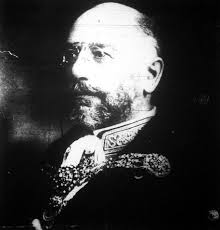 [/url] .org/image/hi7kip0d3/] 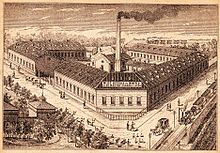 [/url] Top: Manfréd Weiss Bottom: Weiss canned food factory on Csepel Island |
|
|
|
Post by General William T. Sherman on Jul 11, 2016 1:44:40 GMT
Now on the Austro-Hungarian Industrialist; My WC3 boards alter ego, Manfréd Weiss de Csepel! Manfred Weiss was born on April 11, 1857 in Pest, Austria-Hungary. He too was made a Baron for his services to Austria-Hungary. Manfréd Weiss Steel and Metal Works and its factory in Csepel Island outside Budapest had become one of the largest arms suppliers for Austria-Hungary pre-WWI. He also supplied arms to Serbia, Bulgaria, Portugal, Spain, Mexico, and Russia. After receiving support from the Hungarian Society of Industrialists, his firm became the largest in Austria-Hungary During WWI, he produced a wide variety of equipment, from ammo to airplanes. In that period, he employed 30,000 workers. Assesment: Since he was a Baron, nobility is a must. Not sure about other skills though.   Top: Manfréd Weiss Bottom: Weiss canned food factory on Csepel Island I like these little bios for these industrialists, maybe you should consider doing a lecture series on these guys? Idk if you don't know enough about them for doing a lecture, but it would be nice to see. Also, im assuming Henry Ford for America? |
|
|
|
Post by Jean-Luc Picard on Jul 11, 2016 1:45:46 GMT
Now on the Austro-Hungarian Industrialist; My WC3 boards alter ego, Manfréd Weiss de Csepel! Manfred Weiss was born on April 11, 1857 in Pest, Austria-Hungary. He too was made a Baron for his services to Austria-Hungary. Manfréd Weiss Steel and Metal Works and its factory in Csepel Island outside Budapest had become one of the largest arms suppliers for Austria-Hungary pre-WWI. He also supplied arms to Serbia, Bulgaria, Portugal, Spain, Mexico, and Russia. After receiving support from the Hungarian Society of Industrialists, his firm became the largest in Austria-Hungary During WWI, he produced a wide variety of equipment, from ammo to airplanes. In that period, he employed 30,000 workers. Assesment: Since he was a Baron, nobility is a must. Not sure about other skills though.   Top: Manfréd Weiss Bottom: Weiss canned food factory on Csepel Island I like these little bios for these industrialists, maybe you should consider doing a lecture series on these guys? Idk if you don't know enough about them for doing a lecture, but it would be nice to see. Also, im assuming Henry Ford for America? We're doing Renault for France, so Carnegie for US (made him a total badass) |
|
|
|
Post by General William T. Sherman on Jul 11, 2016 1:47:51 GMT
I like these little bios for these industrialists, maybe you should consider doing a lecture series on these guys? Idk if you don't know enough about them for doing a lecture, but it would be nice to see. Also, im assuming Henry Ford for America? We're doing Renault for France, so Carnegie for US (made him a total badass) Carnegie is great! He had a trust which was broken up (thankfully), but he was still a very good man. Gave to charity, helped infrastructure, and wasn't an anti-semite (unlike Ford who was notoriously anti-Semitic) |
|
|
|
Post by Jean-Luc Picard on Jul 11, 2016 1:48:43 GMT
We're doing Renault for France, so Carnegie for US (made him a total badass) Carnegie is great! He had a trust which was broken up (thankfully), but he was still a very good man. Gave to charity, helped infrastructure, and wasn't an anti-semite (unlike Ford who was notoriously anti-Semitic) Jewish as I am, Ford's antisemitism had nothing to do with the choice |
|
|
|
Post by General William T. Sherman on Jul 11, 2016 1:51:51 GMT
Carnegie is great! He had a trust which was broken up (thankfully), but he was still a very good man. Gave to charity, helped infrastructure, and wasn't an anti-semite (unlike Ford who was notoriously anti-Semitic) Jewish as I am, Ford's antisemitism had nothing to do with the choice Ik, but thats still a plus compared to Ford (referring to Carnegie not being anti-semitic) |
|
|
|
Post by Laurent de Gouvion on Jul 11, 2016 2:41:19 GMT
Alright, now on Vickers (GB). Thomas Vickers was born on 9 July 1833. His father, Edward Vickers was one of the cofounders of Vickers Ltd. alongside with George Naylor. He and his brother Albert ran the business until 1909, when he handed over control to Albert. He died in 1915. During WWI, Vickers Ltd. produced artillery, a modified version of the Maxim machine gun, airplanes, ships, torpedoes, and cars. A modified Vickers Vimy was used in the first non-stop transatlantic flight of Alcock and Brown.   Top: Thomas Vickers. Bottom: Vickers Vimy bomber in the transatlantic flight. |
|
|
|
Post by Laurent de Gouvion on Jul 11, 2016 13:45:29 GMT
13 Votes? ILLUMINATI CONFIRMED. In all seriousness, on Renault (French Industrialist) Louis Renault was born on 12 February 1877 in Paris. In 1898, young Renault built his first car, the Voiturette. He had a bet with his friends that his car, which had an innovative crankshaft could beat a car with the old bicycle-like chain drive up the slope of Rue Lepic in Montmarte. He won, and the prize was 13 orders for his car. In WWI, France was lacking artillery shells, but Renault suggested car factories like his produce shells by hydraulic pressing. He later won a Legion of Honor for his efforts. His most famous invention was perhaps the Renault FT light tank, which was the most successful tank in WWI. George S. Patton was among the first US officers to use the Renault FT. He died in 1944, imprisoned because of suspected collaboration with the Nazis.   Top: Louis Renault Bottom: Renault FT |
|
|
|
Post by Laurent de Gouvion on Jul 12, 2016 5:16:26 GMT
Now on the Russian Industrialist. Alexander Ivanovich Konovalov was born in 17 September 1875 in Moscow, Russian Empire. He became one of Russia's biggest textile manufacturers. He also pushed business interests in Russia's legislative body, the Imperial Duma. During WWI, he was Vice President of Guchkov's Military-Industrial Committee. When the First Coalition of the Provisional Government replaced the Council of Ministers, he became Minister of Trade and Industry. In the second coalition, he was excluded as the his business interests were deemed bourgeuise. However, in the Third Coalition of the Provisional Government under Alexander Kerensky, he became Vice President and Minister of Trade and Industry. After the October Revolution, Konovalov emigrated to Paris, France. He became one of the leading emigre figures. He died in 28 January 1949 in Paris. .org/image/3w5ixlkrr/] 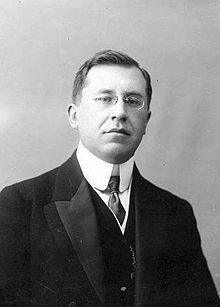 [/url] .org/image/f5c8te6kh/]  [/url] Top: Konovalov. Bottom: Cabinet of the First Coalition of the Provisional Government. Notice Konovalov in the upper middle. |
|
|
|
Post by Laurent de Gouvion on Jul 12, 2016 10:40:44 GMT
I like these little bios for these industrialists, maybe you should consider doing a lecture series on these guys? Idk if you don't know enough about them for doing a lecture, but it would be nice to see. Also, im assuming Henry Ford for America? On lectures, I have a weird idea (hope people'll accept it) I'll read poems from history and do a presentation on the historical background. |
|
|
|
Post by Jean-Luc Picard on Jul 12, 2016 14:29:41 GMT
I like these little bios for these industrialists, maybe you should consider doing a lecture series on these guys? Idk if you don't know enough about them for doing a lecture, but it would be nice to see. Also, im assuming Henry Ford for America? On lectures, I have a weird idea (hope people'll accept it) I'll read poems from history and do a presentation on the historical background. I really want to see that |
|
|
|
Post by Laurent de Gouvion on Jul 12, 2016 14:34:19 GMT
I have never done it in a global way.
But first one is going to be The Charge of the Light Brigade because... well, everyone knows that.
|
|
|
|
Post by Laurent de Gouvion on Jul 18, 2016 7:20:48 GMT
Now on the US Industrialist: Andrew Carnegie! Andrew Carnegie was born on November 25, 1835 in Dunfermline, Scotland. He and his parents emigrated to the USA, specifically to Pennsylvania. Carnegie began working as a messenger boy in the Ohio Telegraph Company. He was promoted to operator due to his skill of translating messages without a strip. In 1853, Carnegie worked in the Pennsylvania Railroad Company as a secretary and telegraph operator, as he thought the railroad industry had better prospects than the telegraph industry. He also began his first investments under the guide of his boss. He also arranged a merger between a sleeping car company he had shares in and George Pullman's. During the Civil War, his boss became Assistant Secretary of War. He tasked Carnegie to reopen Union telgraph lines. The Civil War was a huge lesson for Carnegie, as it showed the importance of industry in the Union victory. He started devoting all his time to iron works after the Civil War, leaving railroads altogether. He used his railroad connections to effect during his early years to get contracts and sell iron. He helped fund and supplied steel for Eads' Bridge over the Mississippi. He also bought out his rival in 1883. In 1892, he launched the Carnegie Steel Company. He previously had adopted the Bessemer process, which enabled cheap mass production of steel. He also owned all his suppliers, thus effectively cutting costs. His wealth also had some controversies which weighed heavily on him, those being the 1887 Johnstown Flood and the Homestead Strike, where Pinkertons fired upon union workers. Both were mostly caused by Henry Clay Frick, his partner. Frick was nearly assassinated, and after the attempt Carnegie bought out his shares. In 1901, banker J.P. Morgan planned an intergrated steel industry and for that he had to buy Carnegie out. Carnegie was planning to retire, and Morgan bought his company for $ 480 million (13.7 billion in 2016). Carnegie himself recieved $ 225.639.000 (6.42 billion in 2016). His and other steel companies were merged into U.S. Steel. He became a philantrophist, following his dictum that the last third of one's life must be devoted to giving money away to causes one thought to be important. Carnegie University and Carnegie Hall are examples of his philantrophy. He also corresponded with U.S. Presidents and author Mark Twain. He died on 11 August 1919 in Lenox, Massachusetts as one of the richest men in the world with a net worth of $ 480 million (about $ 310 billion today) 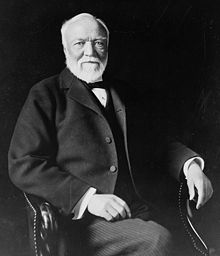 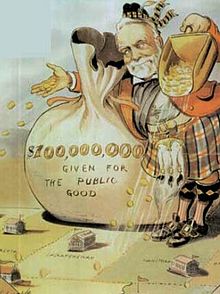 Top: Carnegie Bottom: cartoon on Carnegie's philantrophy. |
|
|
|
Post by Laurent de Gouvion on Jul 27, 2016 14:27:39 GMT
After a hiatus, on the Japanese Industrialist, Okura Kihachiro! Okura Kihachiro was born on 23 October 1837. He found the Okura Zaibatsu (Zaibatsu refers to conglomerates in the Empire of Japan). He was from the peasantry, but he started his own grocery store in 1857. After eight years, he became an arms dealer in the newly-modernizing Japan. He was one of the investors in the original Imperial Hotel, also being an expert in martial arts. He also was collector of antiques, and he built the first private museum in Japan, the Okura Shukokan. It was destroyed in the 1923 Kanto Earthquake, but it was rebuilt and still stands today. It houses 2000 pieces and 35000 texts today. He died on 5 April 1928, raising from a peasant to a Baron. 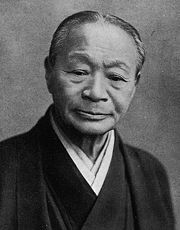 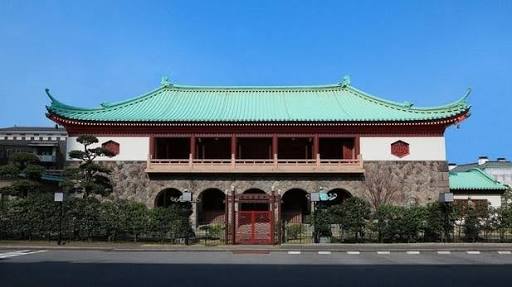 Top: Okura Kihachiro Bottom: Okura Shukokan, modern view. |
|